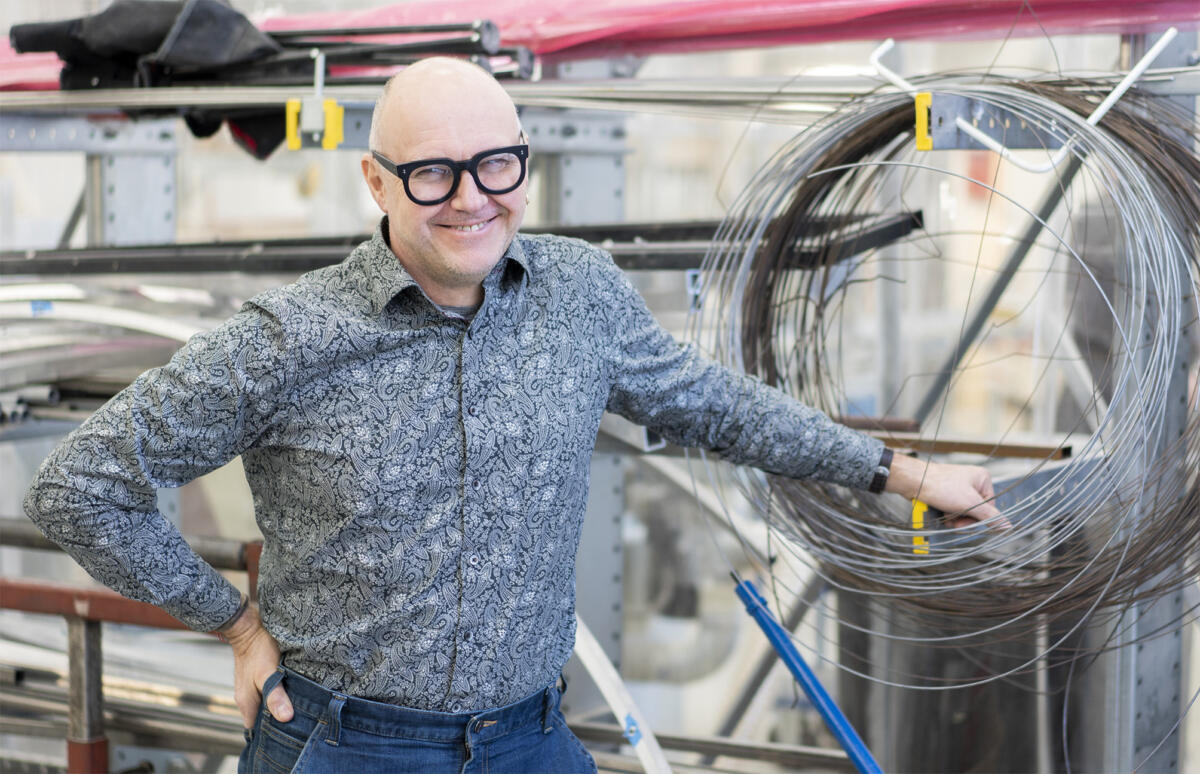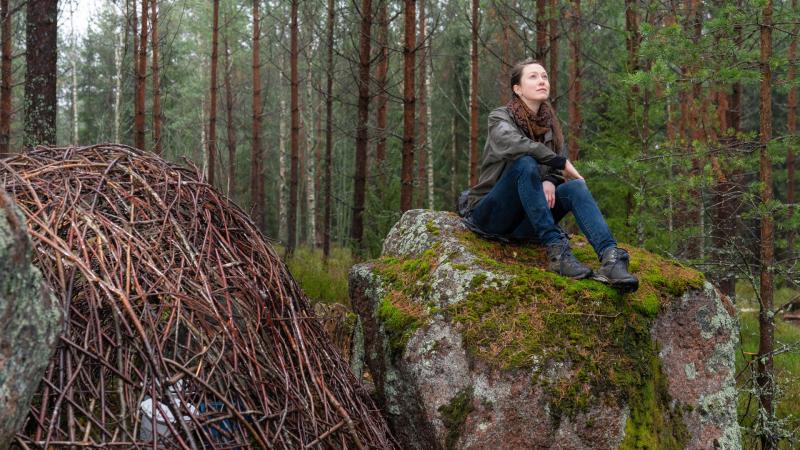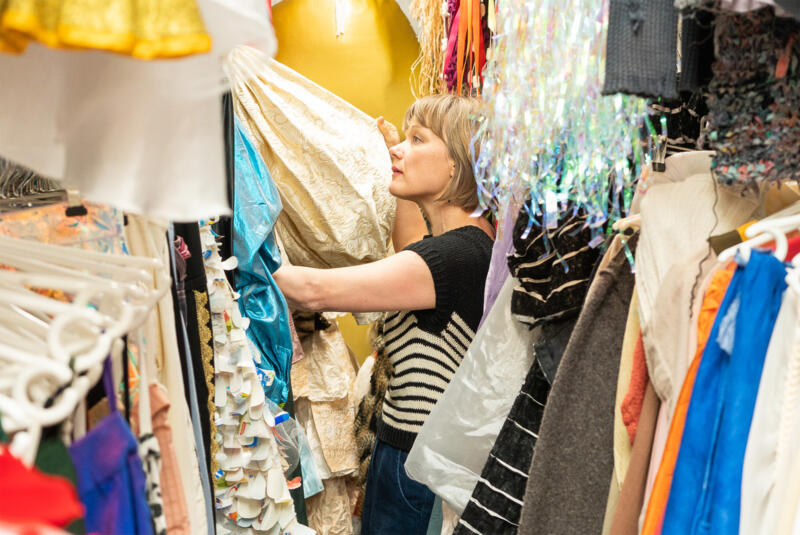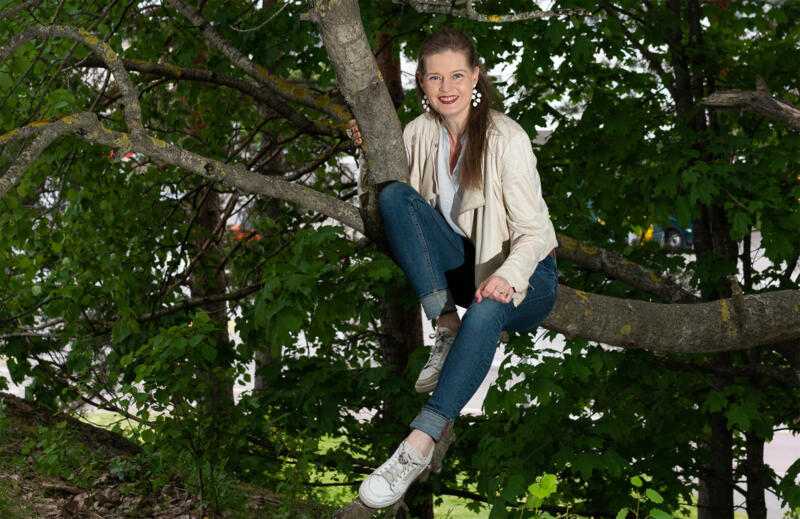Professor Andy Best: “It’s important to enable people to work in sustainable ways”
Professor of Sculptor Andy Best from the Academy of Fine Arts tells, that the various recycled and alternative materials are used as much as possible in sculptor workshops. This article is part of a series where we interview Uniarts Helsinki employees and students concerning themes that relate to ecological sustainability.

How are the themes, questions or practices of ecological sustainability visible in your teaching and artistic practice?
We put together a lecture series called “Sculpture on a burning planet”, which consists of guest lectures on “how to do art in time of ecological crises”. We are also publishing a book with the same title that consists of chapters written by the speakers of the lectures plus some other contributions of writers and artists.
We also strive to act in a sustainable manner in our teaching and artistic work with our sculpture students in our workshops. We have written down the principles of “sustainable sculpture and culture of care”, and it’s an ongoing work to try and incorporate the principles in our everyday practices and awareness. We work with various recycled and alternative materials, prefer the most sustainable traditional materials like clay and lamb wool with care and do collaborations with other artists and institutions. Instead of banning plastics, for instance, our aim is to raise awareness of the sources of materials. Lot of the sustainability stuff intertwines also with work space safety and maintenance. We have had difficulties though, from which most have to do with insufficient storage space and possibilities to really sort and recycle all of our materials. Things are being developed further, but it is slow.
We also are planning a study trip to Lapland to work with Sami artists and also to see the effects on the nature by extractive mining industry. We will also have a visiting professor in spring 2023 from Shetland, Scotland, who has studied the problematic wind turbine farm projects of her home island in her art.
I personally have sailed the Baltic Sea for 25 years with a sailboat, and for last three years we have been inviting artists and researchers to our catamaran to experience the sea, work together and also see the ecological state of the sea. The project is called Imagining Godzilla, and will be continued now with a proper funding also. On our trips we also visit some research stations and interact with the “boating public” to raise awareness of the issues of Baltic Sea and sustainable boating.
Why do you think ecological sustainability is important or interesting in your own work?
It is the most important theme and the most serious problem of our time, yet when I read the news it doesn’t seem that way. Millions of people already suffer from the consequences of ecological crises and we are not heading in any better direction. So it is important, interesting and also very necessary.
What do you think is or should be the role of Uniarts Helsinki in environmental matters?
Obviously it is important that the university takes the stand and shows that this is a important question in all the levels. This is also what most of the students expect. The most important thing to me is to really enable for people to work in sustainable ways in everyday practices.
This creates a foundation and motivation for the broader, more strategic and progressive but also more abstract or philosophical themes and actions regarding ecological issues.
It is also important to teach the students the sustainable mindset and how to use recycled materials, for example. But for all this we need good facilities and opportunities to concretely work in a sustainable way in our working spaces.
The fourth goal in Uniarts Helsinki’s strategy is that “art is part of the solution to the ecological sustainability crisis”. What thoughts does this evoke? If art is or was part of the solution, what do you think it could mean in practice?
I think art has potential in it because often it is not as directly linked to the need for making monetary profit as some other fields of society. Artists personally often tend to be creative people who focus more on the common good rather than individual gains, money and maximizing profit. This is a good ground for exploring things holistically and also taking action. Of course art can also raise awareness and have other kinds of influence as well.
What kind of art has influenced you lately in environmental themes? How? You can give an example.
For example art forms like land art and earth art from the 70’s and 80’s onwards have been interesting to me, especially the later work of for example Richard Long or Andy Goldsworthy, where the artists have worked respectfully and “in tune” with natural places and environments rather than destroying or intruding in them. Also it has been interesting to follow some of the collaborations between scientist and artists, where artists may also make the scientific findings or phenomena more accessible to a wider public.


